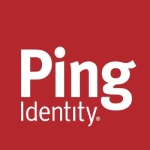The purpose of One Identity Manager is to implement identity and access management tools. For on-premises use, we must connect various target systems and trusted sources with the central identity and access management tools. This involves integrating Workday or other HR management systems with One Identity Manager and linking authentication sources, such as Active Directory or Azure AD, with One Identity Manager. Additionally, One Identity Manager has a specialized connector library for SAP solutions.
This solution can be deployed on the cloud and on-premise.
One Identity Manager connects SAP accounts to employee identities under governance from the connections that are provided.
For customers who already have an SAP system in place, the availability of readily available, specially-designed connectors is crucial. This would be highly beneficial for all clients with SAP systems.
The solution delivers SAP-specialized workflows and business logic.
This vendor provides end-to-end solutions that cover a wide range of areas related to user administration and governance, such as identity governance and administration, identity management, access management, and cloud-based solutions. They are also one of the few vendors to offer complete privileged account management solutions. Recently, they acquired OneLogin, which adds customer identity and access management to their comprehensive offering.
One Identity has solutions for all needs related to the IDE and privileged identity.
One Identity Manager provides a Web UI interface for users, which is currently being modernized through their latest initiative UI. Looking at their roadmap, we can expect to see more advanced UI from One Identity Manager in the future, reflecting ongoing product improvement.
Customizing One Identity Manager to fit specific needs is moderately difficult. With the help of experts, customization is possible, although it may not be a straightforward process. While it is not extremely difficult, it does require some level of expertise to carry out successful customization. One Identity Manager offers various tools for different customization requirements. Having the appropriately skilled resources available can greatly facilitate the customization process.
We make use of the solution's business rules to map our company structure for dynamic application provisioning. The importance of the business rules functionality lies in its ability to assist business analysts in designing organizational approval and provisioning policies. When gathering requirements, business analysts can utilize business rules to create effective policies that meet their needs and achieve their goals.
Connectors are available for both on-premise solutions and cloud-based applications or systems. One Identity Manager offers Starlink connectors specifically for connecting to cloud-based solutions. Although I have not personally worked with this offering, I am aware that it is available.
One Identity Manager helps to minimize gaps in governance coverage across test, dev, and production servers. They offer a feature that allows for the import and export of work, which is useful for moving content between different environments.
Reducing gaps in operations is crucial, not just for identity management but for any product. One way to achieve this is by synchronizing test, dev, and production environments as closely as possible. While it may not be feasible to replicate production exactly, having a miniature model that closely resembles it can greatly reduce gaps and potential problems. This concept applies to all identity and access management products when implementing them. The closer your test or dev environment is to production, the better you can reduce gaps and find potential problems that could arise in production. By identifying these issues in the test or dev environment, you can address them before they occur in the production environment.
The solution has helped create a privileged governance stance to close the security gap between privileged users and standard users.
The critical capabilities of any identity management product are operational activities such as providing access, provisioning, and deep provisioning. These tools are essential to efficiently manage identity and access. However, I am a bit confused about how licensing works with these capabilities.
The solution aids in simplifying application governance aspects such as making decisions regarding application access, ensuring application compliance, and conducting application audits.
The application governance requirements are being taken into consideration while designing and implementing streamlined solutions, which prove to be helpful.
One Identity Manager provides a dedicated module that enables us to set up a test station as per specific requirements. These test stations can be reviewed by the respective managers and their subordinate application orders based on roles. There is also a notification system in place to keep users informed.
In One Identity Manager, there is a module for review and attestation cycles. Whenever this cycle is triggered, notifications are sent to the respective parties who need to take action on their subordinates or evaluate role members. All of these features are available in One Identity Manager and can help fulfill business requirements. Moreover, One Identity Manager can indirectly assist in managing compliance auditing by tracking all actions, such as who performed them and when. This can be beneficial during external or internal audits as it helps in generating reports.
The solution positively impacted our operations and business by allowing us to streamline account provisioning for new hires and employees transferring between departments. When a new member joins my department, their line manager can request the creation of their account in advance. The request is then approved by concerned approvers and notifications are sent out. This reduces the onboarding time for new employees and ensures a smooth transition when an employee moves to a new department. Access can be removed or granted as per the requirements of the new department and line managers can request these changes through the portal, further simplifying the process.
The zero trust model can be implemented based on our understanding of the requirements. We need to design the business policies, rules, role membership, dynamic role membership, group memberships, etc., based on our understanding of zero trust. We need to set up the rules and policies according to the zero trust model and then implement them to achieve our business objectives. This includes designing policies based on departments, roles, job titles, and locations. By doing this, we can effectively implement the zero-trust policy.
The most valuable feature of One Identity Manager is it simplifies user-account provisioning and administration. One Identity offers a comprehensive range of solutions that cater to almost every aspect of the identity and access management domain. Their solution suite includes a login solution for access management that can be seamlessly integrated with your IGS solution. Additionally, they offer a dedicated tool for IGA that fulfills all your identity and assessment requirements. In addition, they have a solution called One Identity Safeguard for identity management and access management, which is gaining increased importance. With One Identity, you can obtain end-to-end solutions from a single vendor, whereas with other vendors, you would need to combine various vendors to achieve the same result.
The tools within One Identity Manager are distributed, meaning there is no unified platform that covers all development, configuration, and installation details. Instead, there are separate tools for each requirement, such as object browser designer, manager tool, synchronization editor, report designer, job queue, and DBQueue. While these tools have built-in functionality, it can be tedious to learn and implement them all. This is in contrast to SharePoint, where all requirements related to role management, workflows, provisioning, and connector configuration can be implemented in one portal. In the case of One Identity Manager, different tools need to be used for each respective requirement. For example, the sync editor is used for connector configuration and related synchronization, while the job queue and DBQueue are used for monitoring jobs.
One Identity Manager is currently in the process of modernizing its UI, which I hope will result in a more user-friendly interface for its Identity Manager. However, it is uncertain whether they have plans to consolidate their various tools into a unified system to simplify configuration and tasks.
It is important to note that this modernization effort is a long-term goal, given that this solution has been in the industry for over 20 to 30 years. Despite its age, it remains one of the leading solutions in the market and is recognized by Gartner and other similar institutions as a top solution.
I have been using One Identity Manager for approximately one year.
The solution is stable in my usage. Since the setup is distributed, there are several components in the environment. Regular monitoring allows us to take appropriate actions when necessary. The solution is stable and scalable according to the available data and comparisons with other vendors' products, as evidenced by reports from Gartner and other evaluators such as Scooping Your Coal. Based on a comparative analysis of multiple products, including those of leading competitors, I have come to this conclusion. These analysis reports are typically released annually.
I rate the stability of One Identity Manager a seven out of ten.
One Identity Manager loads various identity and access management tools, it necessitates multiple instances for applications, web servers, and job server services. Therefore, the installation requires a substantially distributed setup but overall it is scalable.
I rate the scalability of One Identity Manager a seven out of ten.
I have not used the support from the vendor. One Identity has various support sites, such as the support center and community sites, which can help address any questions or issues related to One Identity products. However, my experience with these sites is limited, and I cannot provide more detailed information.
Installing One Identity Manager can be considered moderately difficult, but not overly so since it is based entirely on the Microsoft Windows platform. In comparison to other software installations, it is moderate in difficulty and should not be too challenging to complete.
The deployment timeframe for One Identity Manager varies depending on the size and scope of the project or proof-of-concept. It is difficult to provide a specific estimate without knowing more about the project requirements. Generally, it can take anywhere from three to six months to complete the deployment based on the project scope.
If you want to showcase the functionality of One Identity Manager, the solution provides a cloud environment to its partners with a pre-installed setup. You can use this environment to demonstrate to the customer for a limited time of about one week. This is a quick and easy way to showcase a few use cases that align with your project scope. However, the actual implementation timeframe will depend on the specific project requirements.
I rate the initial setup of One Identity Manager a seven out of ten.
Typically, the installation and configuration of One Identity Manager are handled by a specialized team, while the development and configuration of individual tools to meet business requirements are done by other parties. For installation and configuration alone, it may require at least two individuals with the necessary expertise to ensure a successful setup.
The requirement for maintenance and support varies depending on the situation. If it's a 24/7 operation, then three resources would be needed to cover all three shifts. However, the need for resources depends on the different aspects of maintenance, such as infrastructure installation, configuration, daily health checks, and level three support, which involves the development and making of changes. Typically, organizations have dedicated teams for these three areas, team members should be assigned accordingly based on this information. The tool is comprehensive and able to meet identity and access management needs. However, it can be complex as it contains multiple tools to address requirements in specific areas.
I rate One Identity Manager an eight out of ten.

















